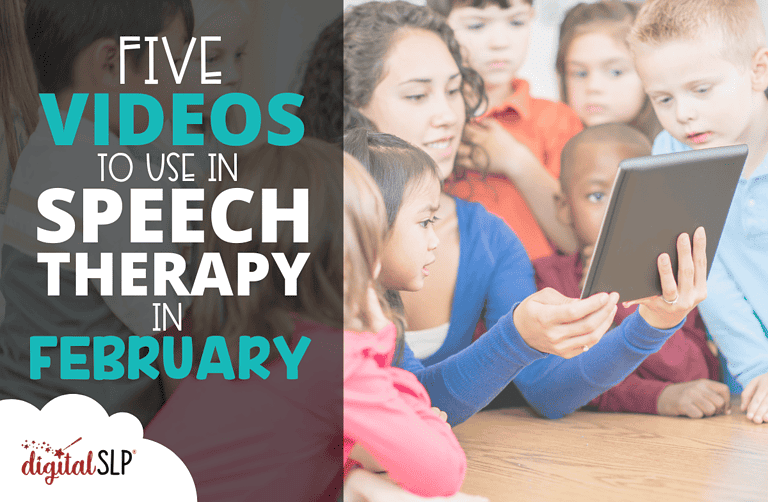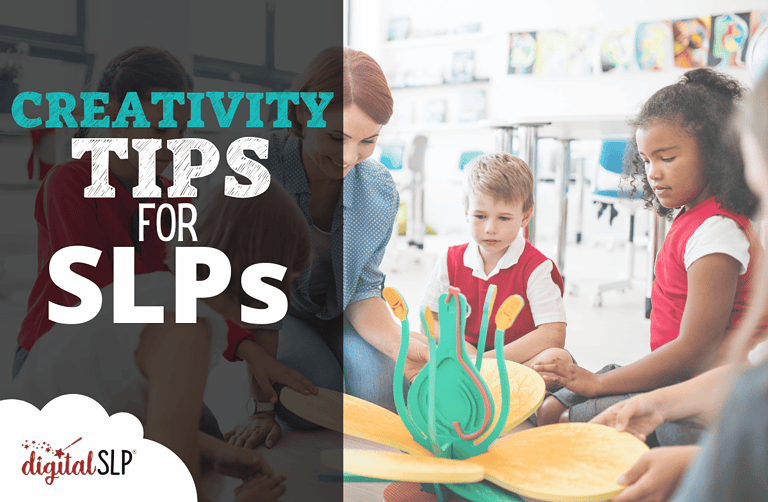Let’s celebrate spring! This month’s video suggestions honor the changing seasons, the natural world, and the power of a dance break.
Just a quick reminder: I watched all of these videos and found them to be worthwhile, but everyone’s needs are different, so please preview any video before sharing it with students.
On with the recommendations!
Length: 8 minutes
Ages: 6th–12th grade
In addition to spring, March brings us Women’s History Month and Expanding Girls’ Horizons in Science and Engineering Month. It’s a great time to learn about boundary-breaking women like ecologist Nalini Nadkarni, the “Queen of the Forest Canopy.” This inviting video from NPR showcases Nadkarni’s enthusiasm for her field, and it might have your students looking for the nearest tree to climb.
Take speech to the treetops with these ideas:
- Describing: This video brings students close to unfamiliar parts of a tree in the forest—including the “canopy soil” that forms on its trunk! Students could talk about what they see, and imagine what they would hear and feel if they visited a similar forest.
- Personal narrative: Nadkarni models an effective personal narrative when she shares the origin story of her love for tree climbing. Students could share their own narratives about favorite activities and even begin to brainstorm possible career applications.
- Problem solving: Early in the video, Nadkarni demonstrates the innovative solution she created to climb tall trees safely. Students could think of additional solutions, or even use Nadkarni’s process as inspiration to tackle their own challenges!
- Social-emotional learning: Yes, Barbie is in this video, and the backstory behind her cameo is full of resilience and persistence. Students could share examples of these qualities from their own lives, and they could compare and contrast their perspectives with Nadkarni’s.
- Extension: Nadkarni calls the forest canopy “the last biotic frontier.” Students could research the meaning behind this term, and investigate other places with similar qualities (e.g., the deep ocean).
Length: 5 minutes
Ages: 2nd–8th grade
In the weeks leading up to National Panda Day on March 16th, treat your students to a dose of cuteness from National Geographic Wild! This video is a friendly introduction to these special bears, and it explains why their lives revolve around bamboo. A word of caution for squeamish viewers: panda poop does make an appearance.
Bring pandas into your speech sessions with these activities:
- Articulation: Discussions about this video could create those elusive conversation-level practice opportunities! Try using “Would you rather?” questions (“Would you rather be a panda or a grizzly?”), or talk about how conservation efforts have helped pandas.
- Vocabulary: Many of the vocabulary words (e.g., “herbivore,” “roam,” “compromise,” “camouflage,” “isolated”) in this video are paired with context clues, giving students an opportunity to determine the meaning of unfamiliar terms.
- Why questions: Students will learn the answers to many different “why” questions throughout the video: why do pandas eat so much bamboo? Why are their cubs so small? Why are they black and white?
- Social communication/personal narrative: Pandas eat up to 40 pounds of bamboo a day! Students could discuss their own eating habits and preferences.
- Extension: The introductory nature of this video will leave students wanting more. They could each choose a panda-related topic to explore in depth, and then share their findings with the group.
Length: 4 minutes
Ages: 1st–5th grade
The first day of spring is March 19th (in the Northern Hemisphere), and this read-aloud from the Magic Bookshelf is a beautiful way to celebrate! Kenard Pak’s lyrical picture book focuses on winter and concludes with a few pages about spring, making it an ideal choice when the new season is just beginning.
Welcome spring with these speech therapy ideas:
- Social communication: This book follows the journey of a young boy and his dog as they explore and greet their surroundings. The natural world responds to these greetings, providing a unique model for conversation skills!
- Verbs: Pak’s background is in animation, but he has the soul of a poet! The book is full of striking verbs for students to discover; e.g. “drift,” “huddle,” “shudder,” “glow,” and “blossom.” Students could also think of synonyms for these words.
- Articulation: The word “spring” is a great way to practice the tricky s-blend “spr!”
- Poetry and syntax: March 21st is World Poetry Day (more on this with the next video), and this book has lovely lines that students could use as templates to create their own short poems.
- Verb tense: The changing seasons provide an engaging way to use different verb tenses. Students could use past tense to talk about winter, and present tense to talk about spring.
Length: 6 minutes
Ages: 2nd–8th grade
Joseph Coelho is the United Kingdom’s Children’s Laureate, and his YouTube channel is a delightful choice for World Poetry Day on March 21st—or any day! The videos include a variety of poetry prompts and tutorials, many of them with direct connections to common speech therapy goals (e.g., metaphors, homophones, rhyming, and more). In this video, Coelho teaches students how to write creative poems about themselves.
Use these suggestions to embrace the power of poetry:
- Standalone lesson: This video could be a welcome relief on a day when you haven’t had time to plan your sessions. It provides structure and instructions, and when it’s over, students could spend the rest of the session polishing their poems and sharing them with each other.
- Social-emotional learning/self-advocacy: Students may feel shy and embarrassed as they begin working on their poems, but if they stick with it, they’ll get a chance to reflect on their strengths and unique traits, ultimately learning more about themselves.
- Language expansion: One of my favorite moments in this video is the “Poetry Power Up,” when Coelho encourages students to add additional details—perfect for students working on language expansion or describing!
- Social communication: This could be a fun get-to-know-you activity for social groups, especially at the beginning of the school year.
- Extension: If your students fall in love with poetry (and I hope they do!), they could explore other forms, including acrostic and haiku. They could also continue with the “I am . . .” theme—and use it to create art!
Length: 2 minutes
Ages: Preschool–1st grade
The Kiboomers kids music channel is a reliable source for gentle videos designed to get preschoolers up and moving, and this one is no exception! As a “bonus,” you may find yourself humming the featured song for the rest of the day. Or week.
This video is categorized as a brain break, but it’s full of learning opportunities:
- Multiple-meaning words: It’s never too early to help students discover all the possibilities of language. This video instructs viewers to “freeze” (stop) at various points, which could lead into a fun discussion about other meanings of the word “freeze.”
- Imitating: For students who are working on joint attention and imitating, this video is full of practice opportunities! Students could mimic the characters as they hop, flutter, buzz, and stretch.
- Following directions: The simple instructions, engaging actions, and multiple repetitions in this video are helpful for students who struggle with following directions.
- Colors/basic concepts/describing: The animation in this video is simple but vibrant, and students could talk about the colors and objects they notice.
- Extension: After students feel confident with the original song, they could mix it up and create their own movement prompts for each other.
I hope you and your students have fun with these recommendations!
If you love using videos in your speech sessions and want weekly recommendations and activity suggestions in your inbox, consider signing up for a Digital SLP membership! This is just one of the many bonuses you receive when you become a paid subscriber. Click here to learn more.













Recent Comments